The SUV market is highly competitive and crowded, which can prove difficult for manufacturers to differentiate their entrant from the pack.
Until now.
Lamborghini, known for their two door supercars, recently debuted its stunning, high-performance Urus Performante SUV that shaved an incredible 20 seconds off the Pikes Peak production SUV hill climb record. The Urus Performante made its way to Pebble Beach, California where it was unveiled to select attendees of the Concours D’ Elegance car show.
And is it impressive!
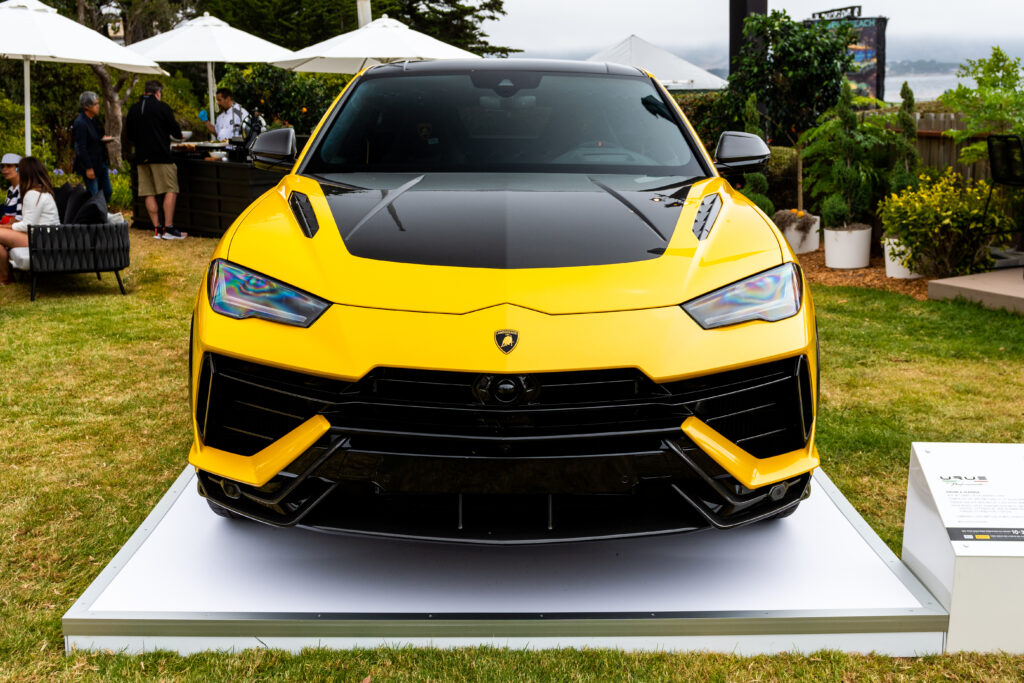
While the Urus Performante is rougher on the road than standard performance SUVs, it is still a viable daily driver. In Performante spec, it is significantly faster than the standard Urus with an improved, more powerful V8, intelligent aerodynamics, and extensive use of carbon fiber. For those who strive for a vehicle with both next-level performance and opulent luxury, fear not. The Urus Performante doesn’t compromise on luxury for increased performance. Perhaps most importantly, it has been designed to be driven often by any driver, not just the professionals who conquered Pikes Peak.
We had the opportunity to sit down at the Concours D’ Elegance with the man who was instrumental in designing the Urus Performante — Lamborghini’s Chief Technical Officer Rouven Mohr — to discuss how the new SUV is at home both on Pikes Peak and at Pebble Beach.
Mason Bloom: Lamborghini said that the vehicle that beat the production SUV record at Pikes Peak is completely stripped down on the inside. With Lamborghini being known for luxurious cabins, is the interior of the Urus Performante any different in comparison to the pre-existing Urus?
Rouven Mohr: Yeah, yeah. But we’ve also completely stripped down not just to save weight, but to balance the vehicle. There are small modifications in the Performante Urus interior compared to the standard Urus. First of all, you see that we have eliminated the chrome, silver surface. Everything is matte black which is a little bit more sporty. That’s also true for the door handles. We have here now, a nice gimmick, these nice door handles now in red. It looks very cool from my perspective — it’s a gimmick but it’s nice! Sometimes gimmicks also make a difference, you know? Then we have more microfiber and we have new stitching on the seats. So the seats are the same, but [we have] the Performante stitching in a new pattern on the seats.
In addition to these, we also have new driving modes. So in the standard Urus we have Strada (for standard, on-road driving), Sport, Corsa (for track use), Sabbia (which means sand, or dirt, in Italian), Neve (for snow), and Terra (for optimal off-road use). We have eliminated Sabbia, Terra, and Neve and we have introduced Rally mode. In this Rally mode, we have recalibrated the dynamic systems — rear-wheel steering and active anti-roll bars — because this is also important even if we don’t have air suspension anymore. We still have active roll bars to control the body and make it more precise. In this Rally mode you can have drifting fun especially on loose surfaces like gravel or snow. So, it’s really fun to drive.
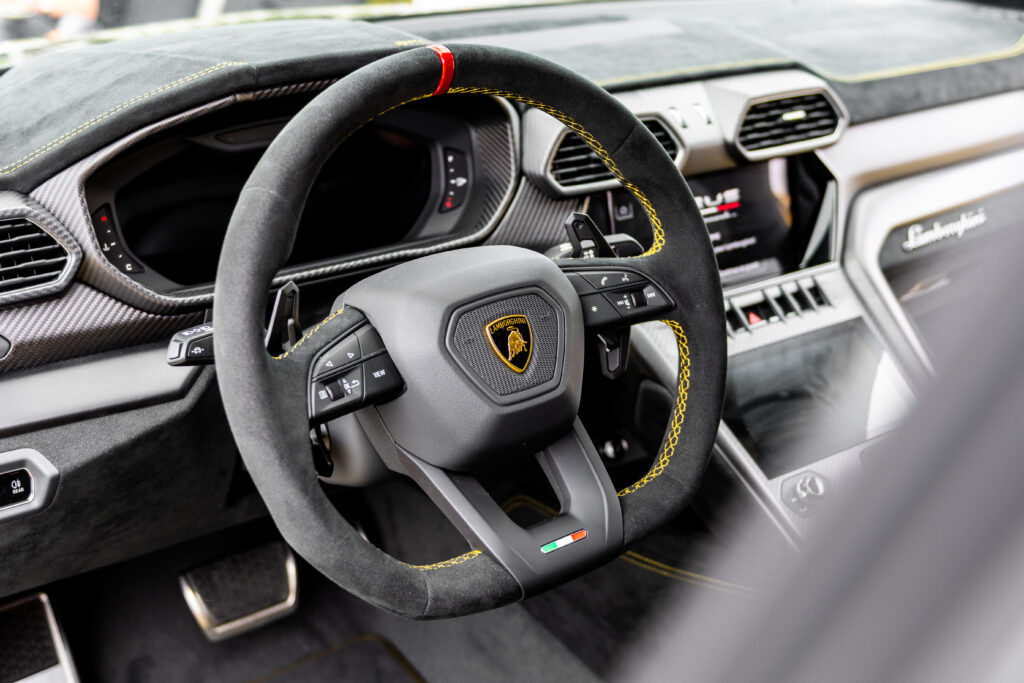
MB: Even with the steel suspension, does the Urus Performante still have driving capabilities on compromised roads like gravel or snow?
RM: Absolutely. For sure it doesn’t have the air suspension feeling, but if you drive on bumpy roads and pothole-filled roads, the high frequency comfort is still there. The car is not uncomfortable. The car feels more compact and feels more connected to the road, this is also what we want.
MB: The Urus Performante has been specifically designed to be a rawer, meaner counterpart of the standard Urus. How much weight would you say the Urus Performante has lost in relation to the Urus?
RM: About 47 kilograms (104 pounds). But not only based on carbon fiber, but also for the lack of air suspension. The air suspension is heavier than the steel suspension. So that was a positive side effect we would say. Overall, we have 47 kilograms saved.
MB: By the looks of it, this is quite a bit more sporty than the Urus. Is it still a viable daily driver or usable on long-distance trips?
RM: Absolutely, it has to be. Yesterday, my colleagues and a few more of us were wondering why we didn’t use a more radical approach, like bucket seats or something. This is nice for a demonstrator, but it’s not fitting to the mission of the car. This is still a daily-user car. So for sure we made the car sharper than the standard one, but still not so radical that you can not use it on the road. You can still do your long-time travels, you can go to the supermarket, the car still has enough ground clearance. For sure we can lower it even more, but then up to a certain level you lose a little bit of the meaning of an SUV. I mean, it has to be an SUV. You can still say, ‘why don’t you lower it even more by 20 millimeters?’ For track use, yes, but not for the daily user. For sure it’s still a daily user, this is clearly a sharper daily user; you have to be aware that the car is sharper. Basically, if you drive it in the standard condition you feel a direct difference but we have no, let me say, limit regarding the usability of the car.
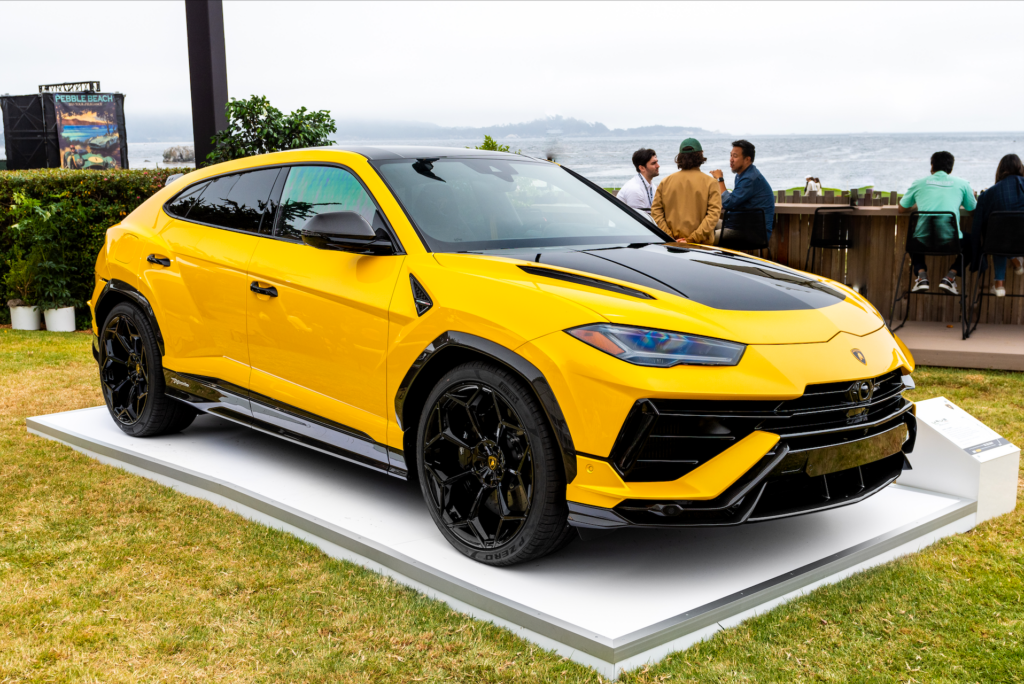
MB: So that means it’s just as capable as the Pikes Peak record-beating car while still being a proper daily driver. How difficult was it to balance these two things: performance as well as luxury and comfort?
RM: This was a challenge, but not as difficult as our main goal. The more difficult part was to implement our general philosophy. We always want to develop cars from a performance point of view that is accessible for the rally customers, not only the pro drivers. To build a car for one fast lap, for pro drivers, is easy because by then it’s a race car. To be honest, from the engine point of view, I would not say that race cars are easier, but race cars have a very sharp mission. For our philosophy, we always provide a car that the customer can perceive the difference not only measuring the lap time, but also at mid speed, low speeds, and on mountain roads.
This was more difficult to find a balance, because it starts with small details but if you want an example, you can have a tire mixture. This has [Pirelli P Zero] Trofeo R tires specifically developed for this. But [outside of this] tire mixture, you can have a tire mixture that has working temperatures that are so small that only pro drivers can use them. This is not our philosophy. Our philosophy is to have a tire that is working also for a wider range of driver types. This is more challenging than to find the compromise between comfort and the ride. To be honest, the handling and the comfort with today’s technology — active dampers, all that we know — it’s possible. But there are a lot of cars on the market, I would never say any negative examples, but there are a lot of cars on the market which are only designed for one fast lap with, really, a pro driver.
MB: Lamborghini has had great success at Pikes Peak, a track that has changed quite a bit over the years as road conditions have improved. To me, it makes most sense to go to such a challenging course and take advantage of the relative ease of finding balance in a sports car, as you said. With this in mind, why did Lamborghini choose to go with an SUV to beat a record at Pikes Peak and not a Huracan STO or Aventador Ultimae?
RM: This is for sure an interesting question. I would never say [those sports cars won’t ever compete at Pikes Peak], but at the first attempt at Pikes Peak, we found that it fit perfectly for the characteristics of this car. Pikes Peak today is different than it was in the 80s…then, it was a rougher road, but today it’s largely paved with asphalt. Pikes Peak has perfect conditions: you have high altitude, which is good for the turbocharged engine, you have fast corners, slow corners, and rougher parts because the upper part of Pikes Peak is quite bumpy. This is exactly everything we need, everything fits very well to what we did during development with this car. We said, ‘this [track] fits perfectly to this car,’ when the Urus was finishing development and ready to present to a lot of tracks. This meant we had to choose exactly this one. In the future, who knows [what types of tracks the Urus Performante will compete at.]
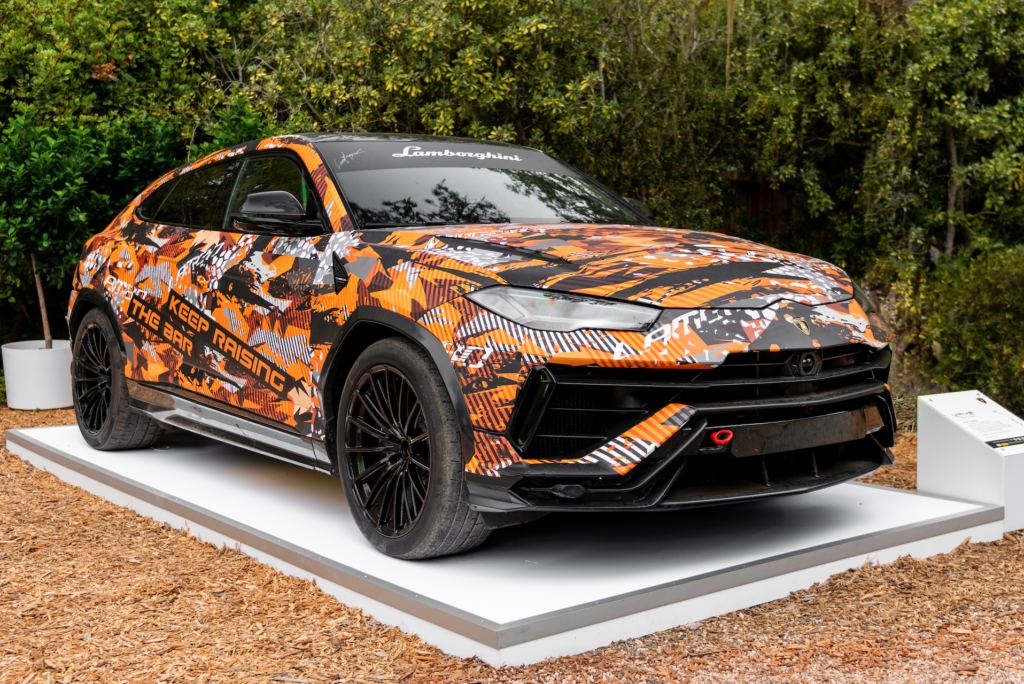
MB: Of course, and as Lamborghini has done so well in sales with the Urus, do you foresee them producing more four-door vehicles such as SUVs in the future?
RM: I mean for sure we are always discussing on the board, ‘what is the perfect product strategy,’ and at the moment we are happy with our three models. Still, we want to highlight the sports cars at our core, so we would never forget our sports cars. Also, the SUV market’s success enables us to continue to optimize our sports cars without thought. In the future we are also discussing a fourth model line. This would be probably fully electric, but then also a little bit more daily oriented.
MB: No wonder, SUVs have been a strong suit for many automakers in sales! Final question, it’s no secret that monstrous V8s in cars like the Urus Performante are starting to go away. Will Lamborghini ever make a fully electric sports car that still retains the same, say, sporty DNA?
RM: In general, we have communicated our company strategy, it’s called [Direzione] Cor Tauri. We start next year with the first hybridization, the Aventador successor, which will be a V12 naturally aspirated new one with electric power. It will be an amazing car, you can be excited! And then every year until 2025 we will hybridize all our model range. This will remain our solution for this decade, and then at the end of the decade we start with the full-electric version. But then we also start with daily user cars. You don’t have to worry because I’m pretty sure that we have awesome, very cool solutions that give us character. Because my impression is that the people feel that at the moment, if they look at the full electric world, they feel that the car has no character anymore. We have some ideas. Also at the beginning, when we started, it was the first time at Lamborghini we presented an SUV. All the people said, ‘aw, they can not do this! It cannot be a Lamborghini, it’s an SUV!’ Now nobody says this. If you have driven the Urus one time, you will confirm that it’s a real Lamborghini. We also have ideas for the fully electric world. We still have some time.
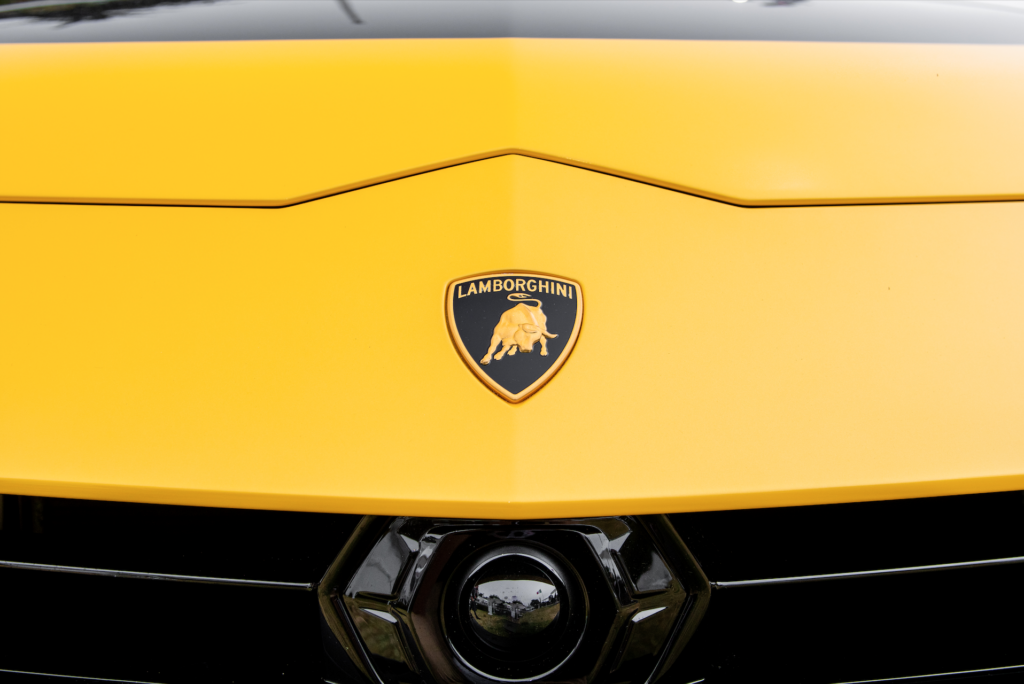
***
With an MSRP of $266,00 the Urus Performante may not be for everybody.. However, with most high-end SUVs already in the six-figure range, the Urus Performante presents an interesting opportunity for people who crave the best performance in a luxury daily-driver. The Performante’s versatility and its competitor-beating performance will make it the best choice for those who want it all in an SUV.
Special thanks to Jordan Russell of Extension Public Relations for going out of his way to arrange the interview and provide everything I needed!
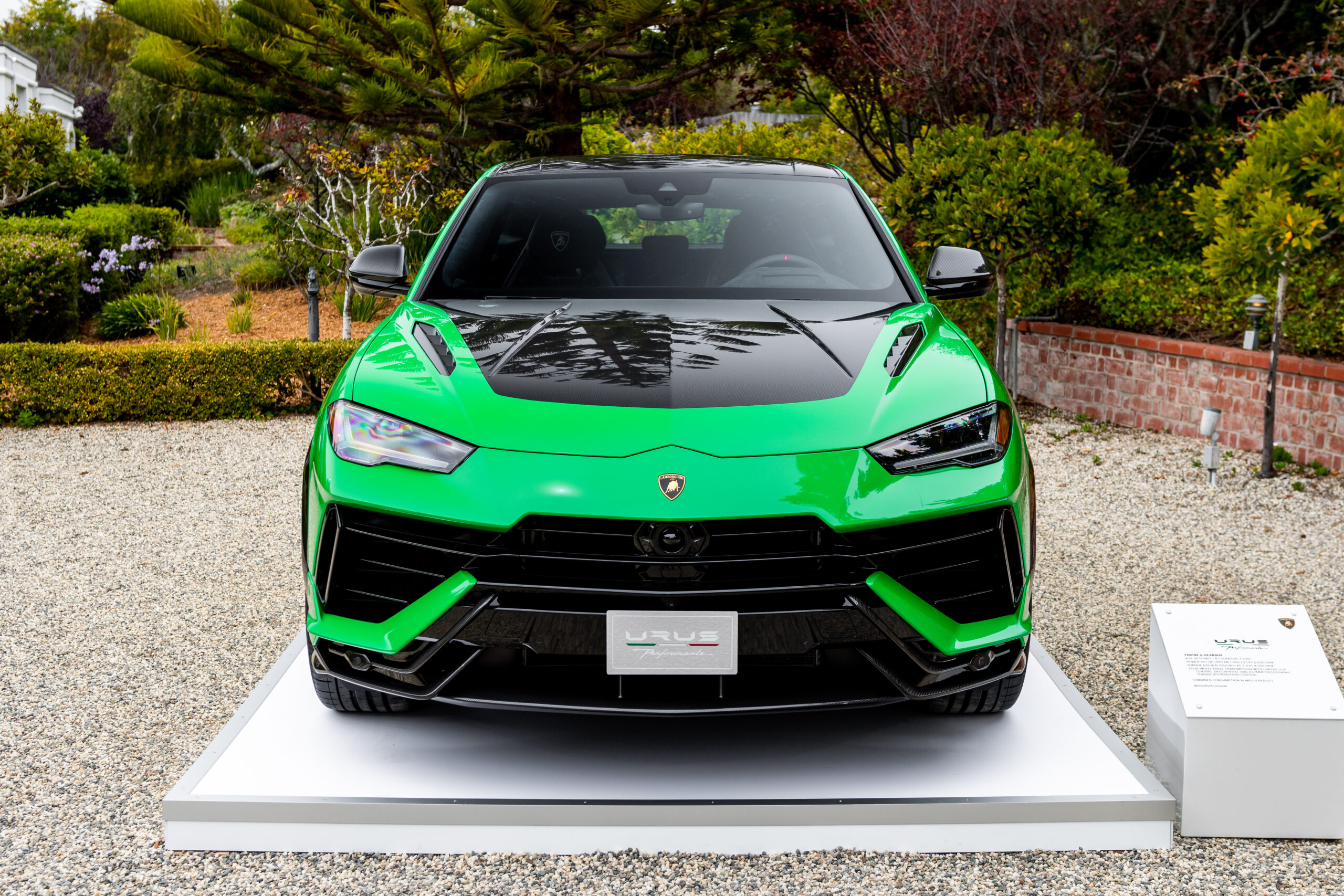



Leave a reply